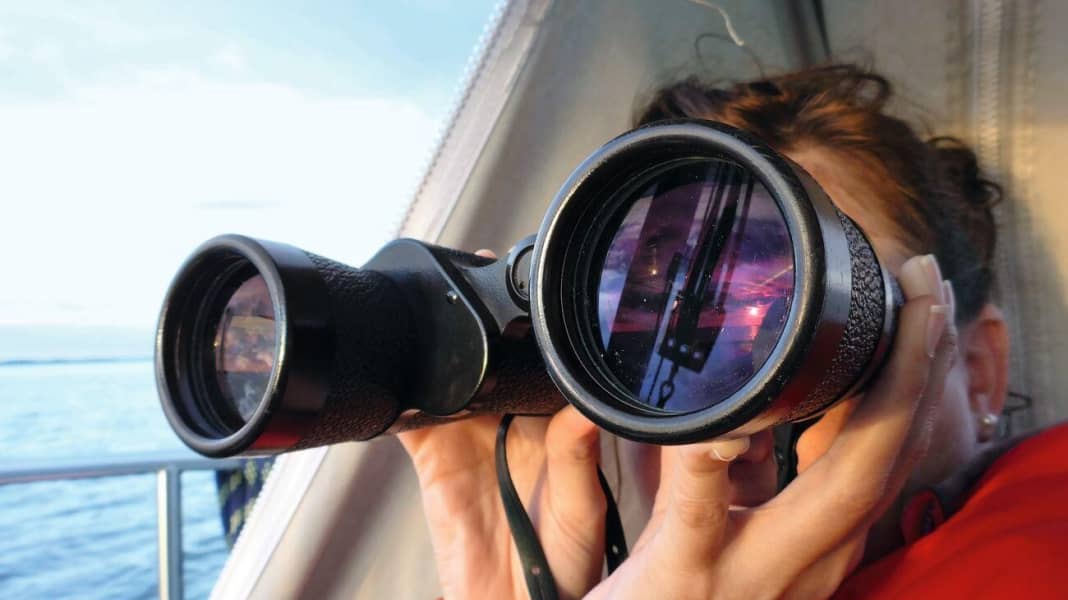
Binoculars for the boat also belong on the boat. Nobody voluntarily drags a monster weighing almost two kilograms ashore just to marvel at the sights. Especially not if you are travelling to the charter boat by plane, where every gram of luggage counts.
If you still don't want to do without high-quality optics, you can opt for the slimmer and lighter 10 x 42 binoculars, which reliably bring distant objects closer both on board and on shore excursions. In the past, these binoculars - usually derided as forester's binoculars - were simply not seaworthy enough. Due to the lack of nitrogen filling, the lenses and prisms fogged up quickly and the coating applied to the glass surfaces was primarily designed for the colour spectrum on land. To put it plainly: while maritime colours were and are favoured in marine lenses, green or earth tones were in the foreground in products for land use. In the meantime, all manufacturers have written the greatest possible colour fidelity into their specifications.
In terms of fogging, waterproofness and robustness, the slim binoculars, which usually work according to the so-called roof-edge principle, have also caught up. This test of seven branded binoculars clarifies whether they are a match for sea legs and which manufacturer offers the best product. They range from just under 270 euros for the Nikon Monarch to around 900 euros for the Zeiss Conquest.
